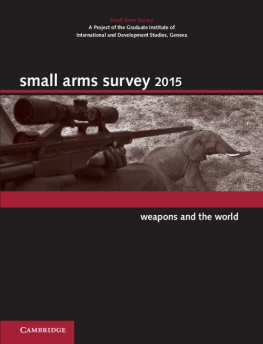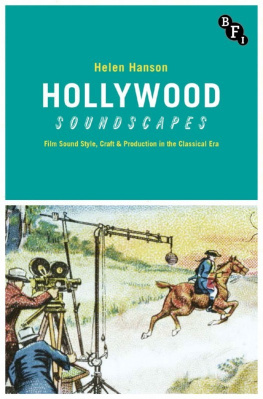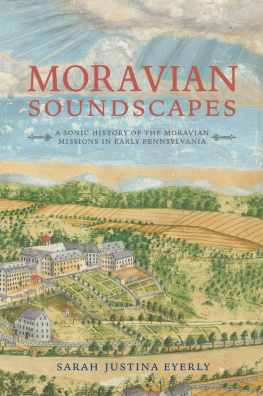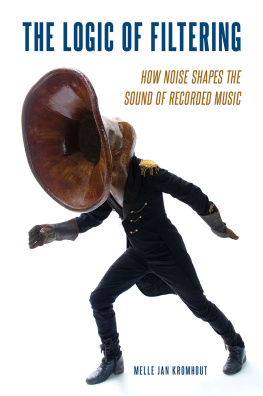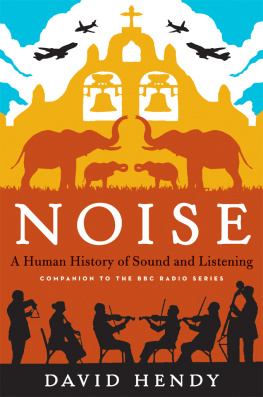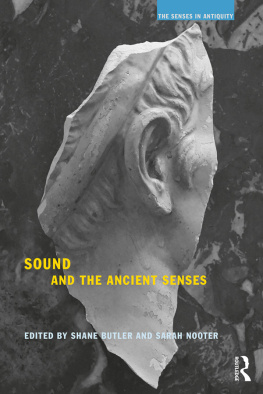Bernie Krause will make you rethink much of what you know about music. A man whose first job was recording the sound of corn growing in a Kansas field, he has spent forty years listening with professional intent to things the rest of us never hear. He has studied the way ants sing and whales roar. He can track the sound a virus makes as it moves from one surface to another. Krause is David Attenborough without the pictures and accompanying orchestra. He takes us close to the roots of the music and reminds us to stop and listen, not just lose our bearings in noise. Its such an unusual bookand, in its quiet way, so important. Remarkable. Norman Lebrecht
This fascinating book awakens our ancient ears to the source of all music. Read it, and youll yearn to muffle our dinand hear anew. Alan Weisman, author of The World Without Us and Countdown
A vade mecum of ordered tranquillitya gift that came with the harmony of the spheres, allowing even the smallest livings things to sing love songs in many diverse ways while bragging that they are the fittest and will survive above the cacophony of war. A fascinating book of natural history, worthy to be read in the silence of your own library, please listen to what it warns about all our futures. David Bellamy
Krause always reveals wondrous stories of the meaning of music and sounds of our natural environment. Bernies research into the subtleties of animal and insect sounds is unparalleled, but it is his description of the radical changes that are taking place on this planet that really makes one stop and wonder listen carefully, for the sounds you hear may never be the same again. Sir George Martin
Discover how each species has its own vocal niche in the intricate soundscape of a stable ecosystem. Temple Grandin, author of Animals in Translation
The Great Animal Orchestra speaks to us of an ancient music to which so many of us are deaf. Bernie Krause is, above all, an artist. I have watched him recording the calls of chimpanzees, the singing of the insects and birds, and seen his deep love for the harmonies of nature. In this book he helps us to hear and appreciate the often hidden musicians in a new way. But he warns that these songs, an intrinsic part of the natural world and essential to human well being, are vanishing, one by one, snuffed out by human actions. Jane Goodall, PhD, DBE, Founder, The Jane Goodall Institute & UN Messenger of Peace
Bernie Krause, one of the lions of soundscape recording, shares his tales of jaguars, wind, and waterfalls, and how hard it is to capture their sounds. Who knew that the most emotional animal sound he would ever hear was the wail of a beaver after seeing his dam destroyed? Krause has spent decades hunting for those few sonic oases untrammelled by human noise, and at last he brings us his life philosophy. This expansive tale of living amidst wild and beautiful sounds has been well worth waiting for. David Rothenberg, author of Why Birds Sing, Thousand Mile Song and Survival of the Beautiful
The
GREAT ANIMAL
ORCHESTRA
BERNIE KRAUSE is both a musician and a naturalist. During the 1950s and 60s, he devoted himself to music and replaced Pete Seeger as the guitarist for the Weavers. For more than forty years, Krause has traveled the world, recording and archiving the sounds of creatures and environments large and small. He has recorded more than fifteen thousand species and four thousand hours of wild soundscapes, over half of which no longer exist in nature, due to encroaching noise and human activity. Krause and his wife, Katherine, live in California.
The
GREAT ANIMAL
ORCHESTRA
FINDING THE ORIGINS OF MUSIC
IN THE WORLDS WILD PLACES
Bernie Krause

First published in Great Britain in 2012 by
PROFILE BOOKS LTD
3A Exmouth House
Pine Street
London EC1R 0JH
www.profilebooks.com
First published in the United States of America in 2012 by
Little, Brown and Company, a division of the Hatchette Book Group, Inc.
Copyright Bernie Krause, 2012
1 3 5 7 9 10 8 6 4 2
Printed and bound in Great Britain by
Clays, Bungay, Suffolk
The moral right of the author has been asserted.
All rights reserved. Without limiting the rights under copyright reserved above,
no part of this publication may be reproduced, stored or introduced into a
retrieval system, or transmitted, in any form or by any means (electronic,
mechanical, photocopying, recording or otherwise), without the prior written
permission of both the copyright owner and the publisher of this book.
A CIP catalogue record for this book is available from the British Library.
ISBN 978 1 78125 000 6
eISBN 978 1 84765 853 1
The paper this book is printed on is certified by the 1996 Forest Stewardship
Council A.C. (FSC). It is ancient-forest friendly. The printer holds FSC chain of
custody SGS-COC-2061

To Kat, to R. Murray Schafer, and to the memory of
Paul Shepard and Joe Axelrod
Sonnet VIII
William Shakespeare
Music to hear, why hearst thou music sadly?
Sweets with sweets war not, joy delights in joy.
Why lovest thou that which thou receivest not gladly,
Or else receivest with pleasure thine annoy?
If the true concord of well-tuned sounds,
By unions married, do offend thine ear,
They do but sweetly chide thee, who confounds
In singleness the parts that thou shouldst bear.
Mark how one string, sweet husband to another,
Strikes each in each by mutual ordering,
Resembling sire and child and happy mother
Who all in one, one pleasing note do sing:
Whose speechless song, being many, seeming one,
Sings this to thee: thou single wilt prove none.
Contents
PRELUDE
Echoes of the Past
It is sixteen thousand years ago, and the plains teem with life. With the presence of the giant armadillo, American cheetahs, saber-toothed tigers, giant beavers, mastodons, camels, caribou, dire wolves, and ground sloths that stand as high as fourteen feet on their hind legs, wildlife is everywhere. Humans havent made their appearance in North America yet, but birds in great numbersincluding pied-billed grebes, storks, Canada geese, ducks, teals, common crows, turkeys, bobwhites, and dowitchersfill the air with flight and song, while tree frogs, peepers, insects, and reptiles saturate the sound field with the intricate tapestry of their voices.
It is the end of an ice age, and the leading edge of the massive Wisconsin glacier slowly recedes to the Arctic Circle. With the earths warming, the floral world thrives. Pine, oak, and spruce trees, along with larch, aspen, balsam, and poplar, have advanced far to the north along with low-lying shrubs and grasses. The first signs of the boreal forest have taken root in the Western Hemisphereit thrives through the cold winters and the warm summers, and it is jam-packed with nonhuman life, whose individual voices coalesce into an intense and collective symphony.
In the heart of the young forest, an area surrounding a small stream is luxuriant and green, set under a deep-blue sky with a few tufted clouds; it is infused with the gentle warmth of a summer breeze. This habitat is densely populated with creature life; in fact, at this time, animal lifeboth numbers of species and individual creaturesis at a numerical peak in our planets history. In this one verdant spot thousands of creatures sing in choruses at all times of the day and night. The visual spectacle is impressive, but the sound is absolutely glorious.
Next page


